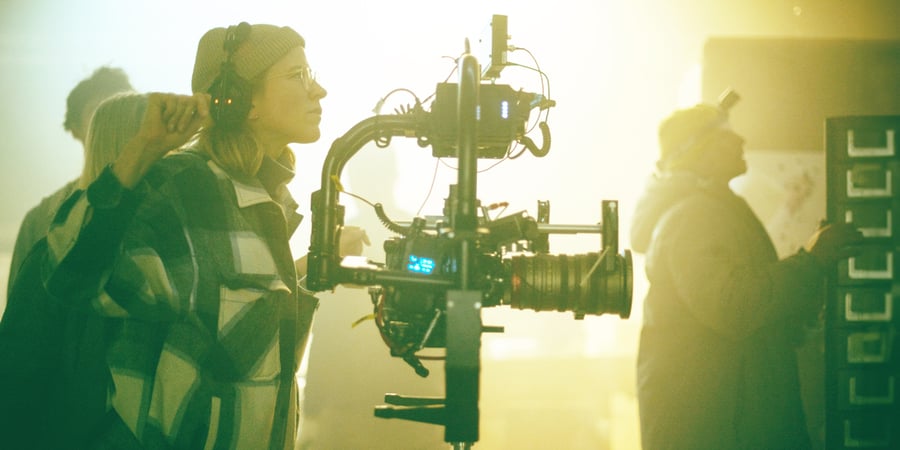Navigating the Risks of Shooting Non-Union: When Independent Films Get Flipped

Independent filmmaking comes with its own unique set of challenges and opportunities. For many filmmakers, the decision to shoot non-union is primarily driven by budget constraints. However, one of the most significant—and often underestimated—risks of this route is the potential for your production to be "flipped" to union status mid-shoot. This transition can introduce unexpected complications that could disrupt your budget, timeline, and team dynamics. Here’s what filmmakers need to know about this phenomenon and how to effectively navigate it.
Understanding the Flip
In the film industry, a production "flip" occurs when a non-union project transitions to being union-organized after production has commenced. This typically involves key industry unions such as IATSE or Teamsters. Once flipped, producers must quickly meet union requirements, which can significantly impact both the budget and the production schedule.
How Flipping Happens
The process of flipping can unfold in several stages:
- Union Representative Visit: A union representative might visit your set, present their credentials, and assess the working conditions.
- Crew Evaluation: The representative may engage with crew members, particularly if any are already part of a union. This could spur discussions about organizing.
- Budget Assessment: If the budget meets certain thresholds, the union may initiate a process allowing crew members to vote on whether to unionize.
Key Indicators and Precautions
To mitigate the risk of an unexpected flip, filmmakers should be aware of the following:
- Hiring Union Members: If you're a non-union set, hire non-union crew as even a single union member on set can trigger a flip.
- Visible Production Elements: Complex rigging equipment, a Digital Imaging Technician (DIT) set-up (such as multiple monitors, computers, and backup drives for managing digital footage), or multiple production trucks can catch the eye of union reps.
- Budget Transparency: Be prepared to provide a clear, honest justification of your budget if questioned.
- Location Considerations: Filming in regions with a strong union presence increases the likelihood of attention from union representatives.
Practical Tips for Independent Filmmakers
- Be Honest from the Start: Maintaining transparency about your production’s non-union status can prevent misunderstandings down the line.
- Educate Yourself: A solid understanding of SAG rules and industry standards is essential—even for non-union shoots.
- Detailed Contracts: Draft explicit contracts that include all terms, such as overtime and rehearsal policies, to manage expectations effectively.
- Budget Flexibility: Have a contingency strategy to accommodate potential shifts to union rates and fringes if there’s a risk of flipping. Predetermine where locations, scenes, or equipment can be reduced to minimize shooting days and costs. Clearly distinguish “nice to have” elements from “must have” essentials. Note that this may not always be feasible without raising additional funds.
- Schedule Adaptability: Prepare to revise your timeline to accommodate union-mandated working conditions if your production gets flipped.
- Seek Legal Insight: Consulting with a legal expert can help clarify your rights and responsibilities in relation to union involvement.
The Consequences of Flipping
Should a flip occur, you will need to:
- Review and comply with relevant union agreements.
- Reallocate your budget to new areas if needed.
- Implement and adhere to union-mandated working conditions and scheduling.
- Consider cost-cutting measures in other areas to balance increased labor expenses.
Last Take
While opting for a non-union shoot might seem like a cost-effective decision, the risk of flipping introduces complexities that can have a profound impact on your film. By staying informed, preparing for potential shifts, and fostering transparency, you can more effectively navigate the production landscape and make educated decisions regarding union involvement in your projects.
Remember, GreenSlate is here to support you every step of the way, providing the tools and guidance needed to streamline your production workflows and keep your project on track.
April 24, 2025
Related Posts
Access our blog for the inside scoop on what’s happening around the production office.
Get The Best of The Blog
Get the best of the GreenSlate blog once a month in your inbox by signing up for our GreenSlate Newsletter.
“If you're not using GreenSlate for processing production payroll, then you're not thinking clearly. We run about 10–12 productions a year and have used several of their competitors. I've put off sharing this as I've truly felt they've been a competitive advantage.”
Jeffrey Price
CFO at Swirl Films, LLC



